Audience: Technical users, RevOps, or platform admins
Most marketers won’t need to adjust these settings. If you’re focused on campaign creation and performance, you’ll mostly work within Agents, Actions, and Insights. Configuration is usually handled once by a platform owner — but it’s good to know what’s powering your decisions under the hood.
What is Configuration?
The Configuration tab is where you set the top-level defaults that apply to all AI Decisioning campaigns. This includes:
- Which users AID is allowed to consider
- How it handles time zones when delivering messages
- Which messaging channels are available (email, push, SMS, etc.)
This configuration is typically done once per workspace but may need to be updated as your campaign strategy evolves.
Navigating Configuration
Navigate to AI Decisioning > Configuration to access the following settings:
1. Parent model (global user eligibility)
This is the top-level set of users that AID is aware of. Every agent will pull from an audience of users from within this model to define who’s eligible to receive AID-driven decisions.
- Recommended: Use a broad, inclusive model (e.g., “All Active Users” or “All App Users”)
- If a user isn’t in the parent model, they won’t be eligible for any actions, even if they match an agent’s audience.
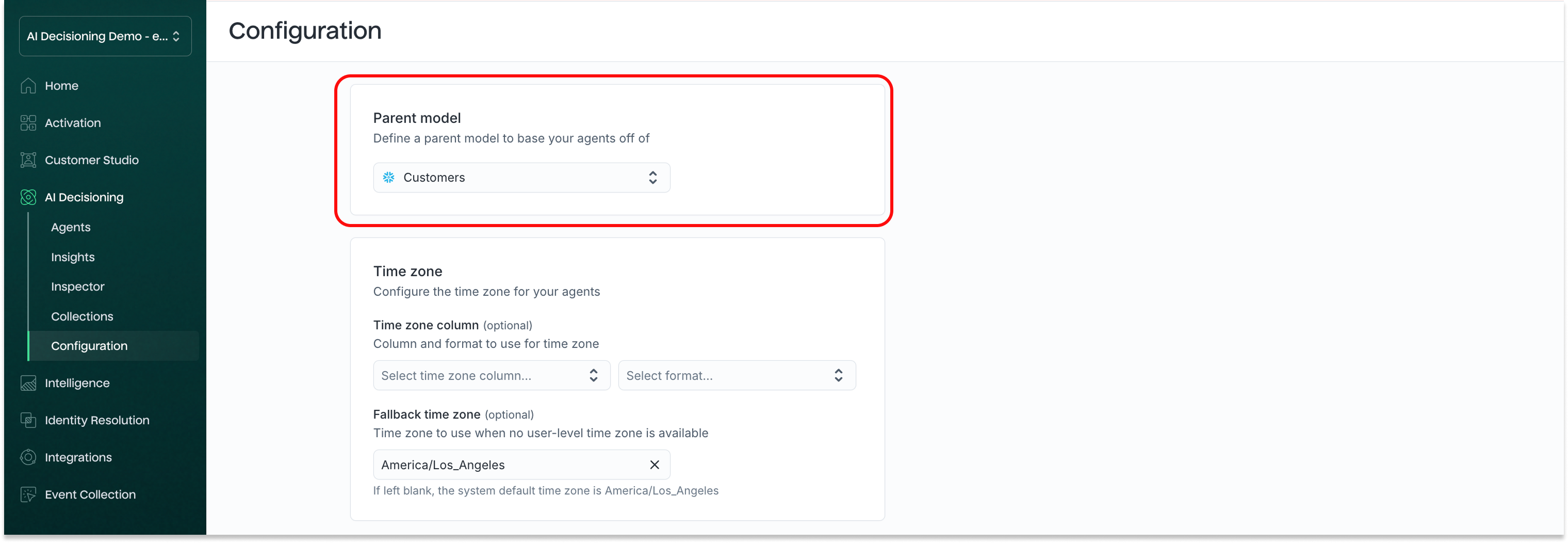
Learn more about defining parent models and preparing your data schema: Prepare data for AID →
2. Time zone defaults
Timing guardrails depend on having the correct time zone context. You can configure:
- User time zone field – e.g.,
user.time_zonefrom your parent model. At this time, each user’s timezone must be formatted as a UTC offset (e.g.,+09:00) or IANA string (e.g.,America/Los_Angeles). - Fallback time zone – Used when no time zone is available for a user
AID uses this configuration to personalize send windows, ensuring users receive messages during optimal hours in their local time.
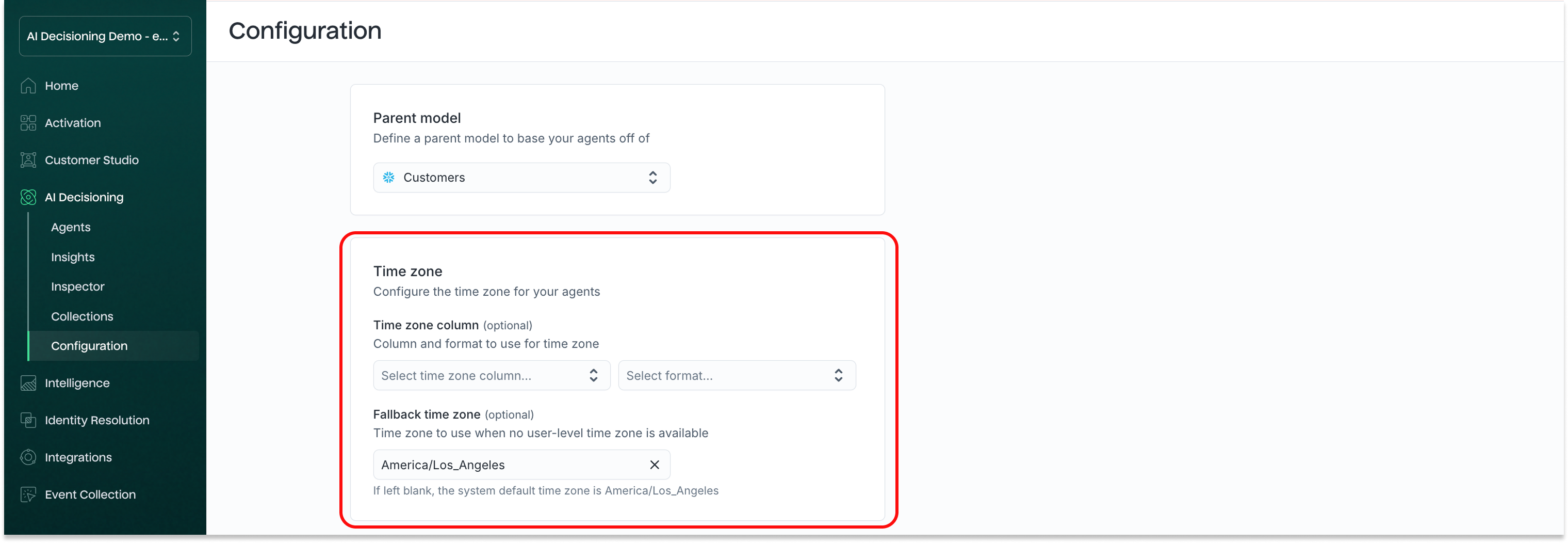
3. Enabled channels
Specify which outbound messaging channels are supported for AID actions. You’ll typically enable:
- SMS
- Push notifications
- In-app messaging (if integrated)
- Custom destinations such as S3 buckets or an internal API endpoint
Channels configured here will become selectable when creating actions inside agents.
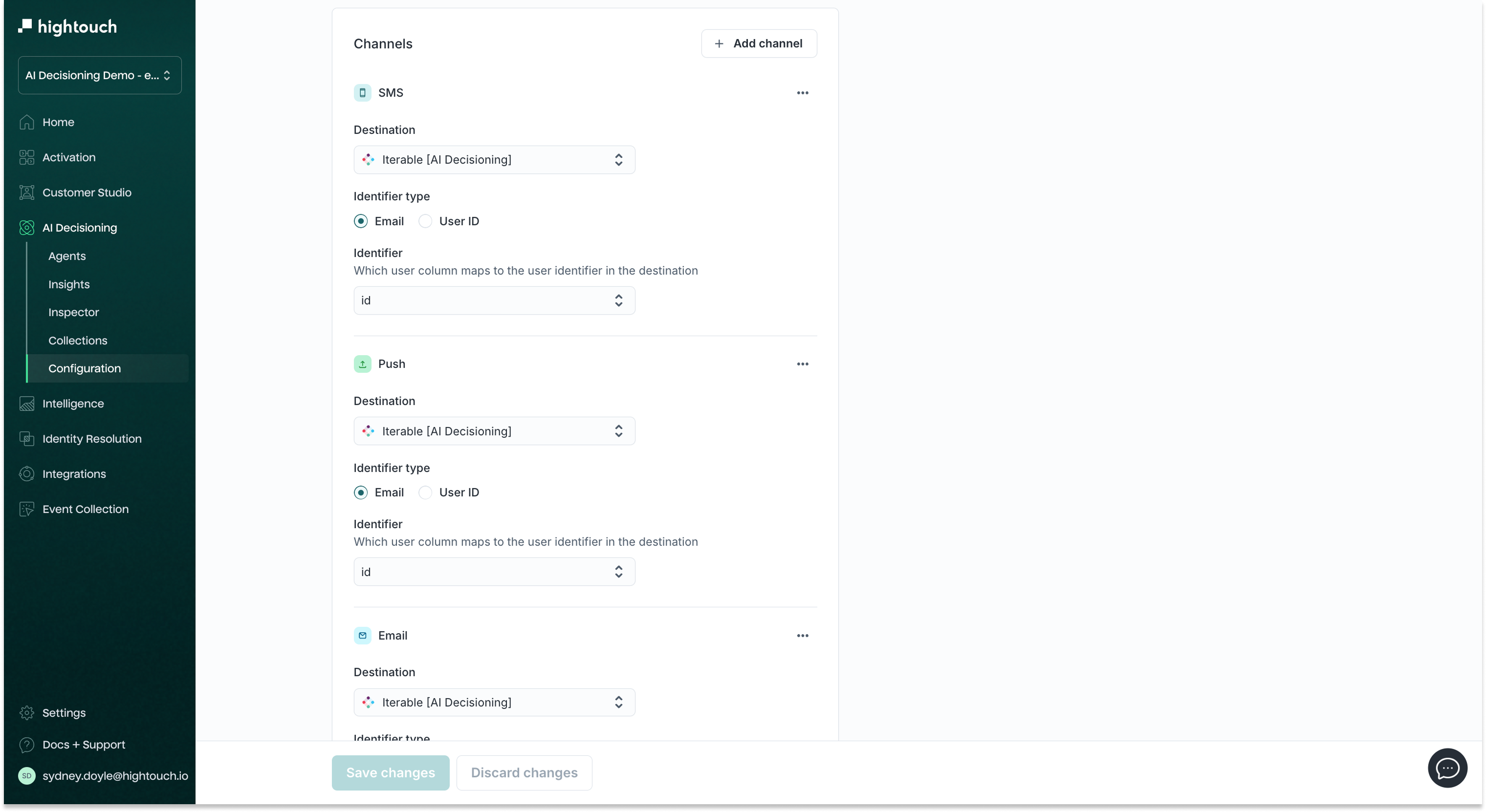
Multi-level eligibility in AI Decisioning
AI Decisioning supports three levels of eligibility and configuration to keep messaging relevant while giving the AI space to learn.
1. Top-level (workspace-wide)
- Set in:
AI Decisioning > Configuration - Controls: The parent model (global eligibility), time zones, and channel access
- Purpose: Defines the master list of users and system behavior defaults
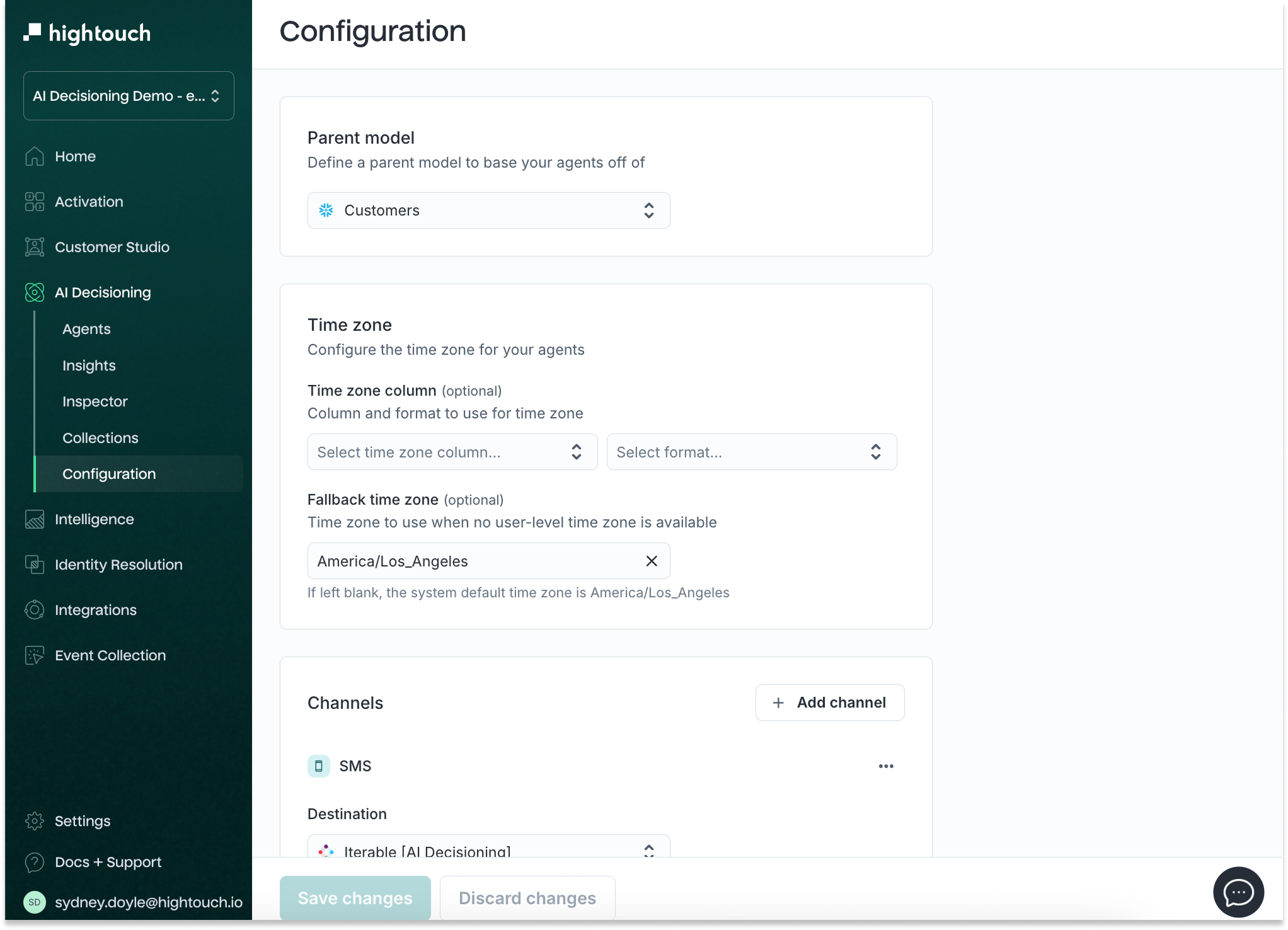
2. Agent-level configuration
- Set in:
AI Decisioning > Agents > [Select Agent] > Configuration - Controls:
- Targeting: Audience segmentation (e.g., "users signed up in the past 30 days and are opted into marketing messages")
- Holdout group: Define % of users excluded from treatment to measure lift
- Scheduling: Define when Hightouch is allowed to send (days, hours, frequency caps)
- Outcomes: What distinct behavioral, engagement, or transactional conversion events you want to see from users in this audience
Note: If a user no longer matches the target audience, they automatically exit the agent.
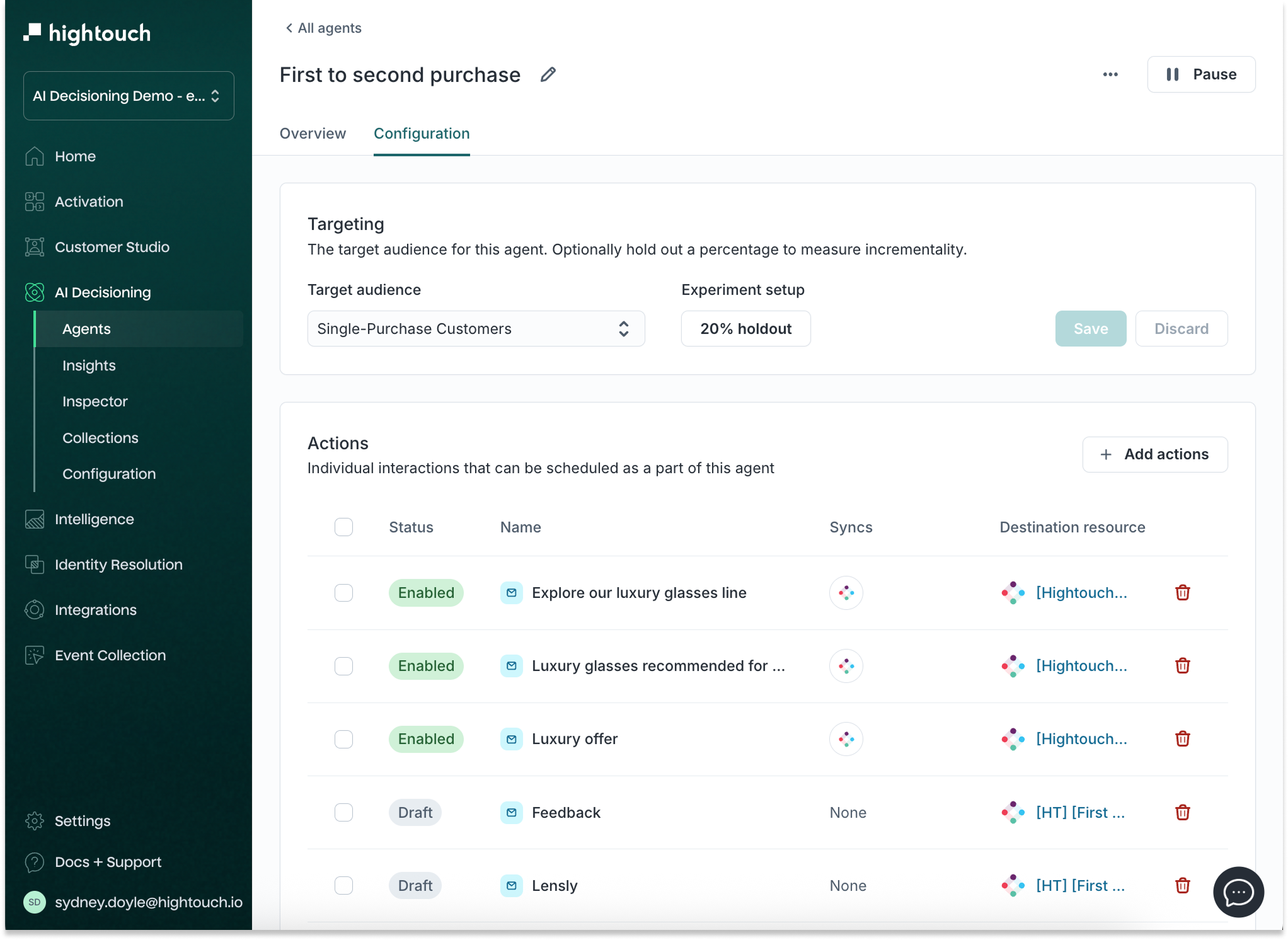
3. Action-level configuration
- Set in:
AI Decisioning > Agents > [Select Agent] > Actions > [Select Action] > Advanced Configuration - Controls:
- Eligibility filters: Narrow who should receive this specific message (e.g., “only users who own a dog”)
- Tags: Add metadata like
tone = casualorformat = gifto help the model generalize learnings - Collections: Pull product or content recommendations dynamically
- Campaign attribution: Attach ESP campaign IDs for reporting
Action-level filters are for relevance, not optimization. The AI uses broader delivery data to learn what works.
